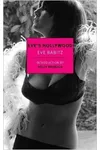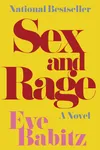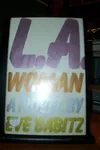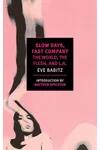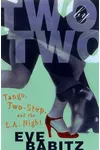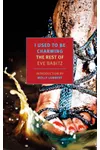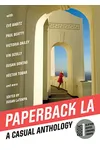Picture a sun-soaked Los Angeles, buzzing with rock stars, artists, and dreamers—meet Eve Babitz, the writer who bottled that magic in her witty, seductive prose! Born in Hollywood in 1943, Babitz blended memoir and fiction to capture the hedonistic charm of the 1960s and '70s LA scene, earning her a cult following and comparisons to Joan Didion. With her sharp humor and unapologetic zest, she became the ultimate chronicler of a city that never sleeps.
From designing iconic album covers to penning essays for Rolling Stone, Babitz lived as vibrantly as she wrote. Her work, often overshadowed by her colorful love life, is now celebrated for its raw honesty and cultural insight. Ready to dive into her world? Let’s explore the life, works, and legacy of this literary adventuress!
The Making of Eve Babitz
Eve Babitz was born on May 13, 1943, in Hollywood, California, to a bohemian family. Her father, Sol, was a violinist for 20th Century Fox, and her mother, Mae, was an artist. With Igor Stravinsky as her godfather, Eve grew up surrounded by creative giants, from Charlie Chaplin to Greta Garbo. This vibrant upbringing shaped her love for art and storytelling. After attending Hollywood High School, she dove into the LA scene, designing album covers for Buffalo Springfield and The Byrds before turning to writing.
Her big break came in 1963, when she posed nude for a now-iconic photo playing chess with Marcel Duchamp at the Pasadena Art Museum. The stunt, meant to ruffle feathers, cemented her as a bold figure in LA’s cultural landscape. By her 20s, she was writing for Rolling Stone and Vogue, her prose as electric as the city she called home.
Eve Babitz’s Unforgettable Stories
Babitz’s writing, a dazzling mix of memoir and fiction, brought Los Angeles to life with a voice that was cheeky, sensual, and razor-sharp. Her debut, Eve’s Hollywood (1974), is a kaleidoscope of essays about her adventures in LA, name-dropping everyone from Jim Morrison to her gynecologist in a sprawling dedication. Critics praised its “self-assured yet sympathetic” tone, with its vivid portraits of freeways, Chateau Marmont, and sour cream.
Slow Days, Fast Company (1977), often called her masterpiece, weaves sun-drenched sketches of LA’s bohemian underbelly—think movie stars on benders and soap-opera actors fretting over scripts. Sex and Rage (1979) follows Jacaranda, a sun-kissed surfer girl navigating LA’s glitzy chaos, mirroring Babitz’s own life. Later, I Used to Be Charming (2019), a collection of uncollected essays, showcased her knack for finding magic in the mundane, earning raves for its “effortless” prose.
Her style, compared to jazz legend Chet Baker, is light yet profound, blending irony with warmth. Babitz didn’t just write about LA; she embodied its spirit, making her a feminist icon for embracing pleasure without shame. Her work, once overlooked, now inspires writers drawn to her unfiltered take on love, art, and excess.
Why Eve Babitz Matters
Eve Babitz’s impact lies in her fearless authenticity. She captured the soul of Los Angeles during a transformative era, blending high and low culture with a wink. Her revival in the 2010s, sparked by reissues from New York Review Books and Lili Anolik’s biography Hollywood’s Eve, introduced her to a new generation. Young readers, especially women, adore her for her unapologetic voice and her ability to make the everyday feel epic.
Despite a tragic 1997 accident that left her with severe burns and a reclusive life, Babitz’s legacy endures. Her work, now archived at The Huntington, continues to shape how we see LA’s cultural history. Novelists like Bret Easton Ellis and Joseph Heller championed her, and her influence ripples through modern memoirists who crave her blend of wit and vulnerability.
- Born: May 13, 1943, Hollywood, California
- Key Works: Eve’s Hollywood, Slow Days, Fast Company, Sex and Rage, I Used to Be Charming
- Notable Fact: Designed the iconic collage for Buffalo Springfield’s 1967 album Buffalo Springfield Again
Snag Slow Days, Fast Company and dive into Eve Babitz’s dazzling world of LA glamour and grit!
